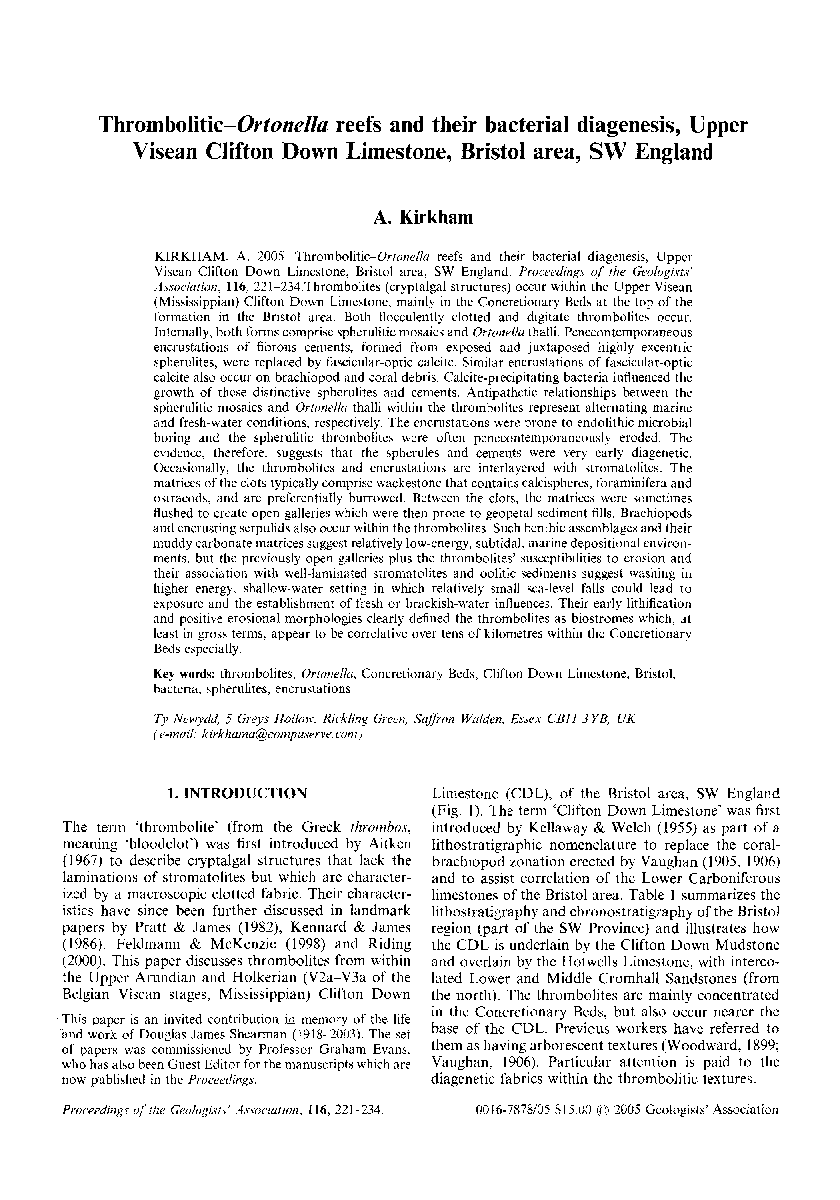| Article ID | Journal | Published Year | Pages | File Type |
|---|---|---|---|---|
| 10120773 | Proceedings of the Geologists' Association | 2005 | 14 Pages |
Abstract
Thrombolites (cryptalgal structures) occur within the Upper Visean (Mississippian) Clifton Down Limestone, mainly in the Concretionary Beds at the top of the formation in the Bristol area. Both flocculently clotted and digitate thrombolites occur. Internally, both forms comprise spherulitic mosaics and Ortonella thalli. Penecontemporaneous encrustations of fibrous cements, formed from exposed and juxtaposed highly excentric spherulites, were replaced by fascicular-optic calcite. Similar encrustations of fascicular-optic calcite also occur on brachiopod and coral debris. Calcite-precipitating bacteria influenced the growth of these distinctive spherulites and cements. Antipathetic relationships between the spherulitic mosaics and Ortonella thalli within the thrombolites represent alternating marine and fresh-water conditions, respectively. The encrustations were prone to endolithic microbial boring and the spherulitic thrombolites were often penecontemporaneously eroded. The evidence, therefore, suggests that the spherules and cements were very early diagenetic. Occasionally, the thrombolites and encrustations are interlayered with stromatolites. The matrices of the clots typically comprise wackestone that contains calcispheres, foraminifera and ostracods, and are preferentially burrowed. Between the clots, the matrices were sometimes flushed to create open galleries which were then prone to geopetal sediment fills. Brachiopods and encrusting serpulids also occur within the thrombolites. Such benthic assemblages and their muddy carbonate matrices suggest relatively low-energy, subtidal, marine depositional environments, but the previously open galleries plus the thrombolites' susceptibilities to erosion and their association with well-laminated stromatolites and oolitic sediments suggest washing in higher energy, shallow-water setting in which relatively small sea-level falls could lead to exposure and the establishment of fresh or brackish-water influences. Their early lithification and positive erosional morphologies clearly defined the thrombolites as biostromes which, at least in gross terms, appear to be correlative over tens of kilometres within the Concretionary Beds especially.
Related Topics
Physical Sciences and Engineering
Earth and Planetary Sciences
Geology
Authors
A. Kirkham,
